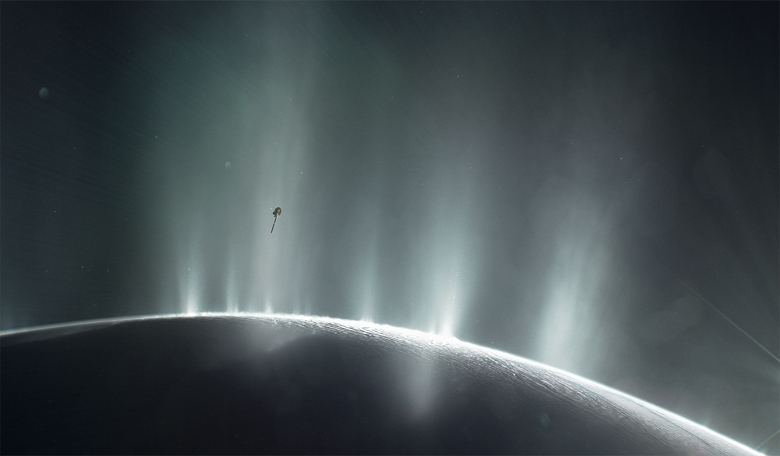Data collected by the Cassini spacecraft before it plummeted into the atmospheric depths of Saturn indicates that the planet’s ice moon Enceladus is even more active than initially anticipated.
Through observations of plumes and hotspots on Saturn’s sixth-largest moon Enceladus, researchers suggest that a global, salty subsurface reservoir is hidden only a few kilometres below its south polar terrain. What's more, these intense jets also seem associated with ongoing seafloor hydrothermal activity. But despite these alluring aspects, a process to explain the transport of hydrothermal products from the core to the plume sources and a mechanism to fuel the jets has so far eluded scientists, as an abnormally high heat power (greater than 20 billion watts) is required.
Enceladus is thought to currently generate heat by a process known as tidal heating, which occurs when one body I.e a moon is under the gravitational influence of a second body I.e its host planet. As the moon orbits the planet, its nearest side is attracted more strongly than its farthest side and the difference causes the moon to get stretched.
This constant stretching (or deformation) generates internal friction which subsequently heats the moon’s interior. It is a common process and is responsible for heating the most volcanically active body in the Solar System: Io.
However, this process alone is thought to be too weak to power any plumes or geysers – the signs of which were first spotted in 2005 – from a seemingly frigid body. And if no other heating mechanism is available then it is suggested that the suspected subsurface ocean would have crystallised into ice within 30 million years.
Now, an international team of scientists working on Cassini gravity data say they have an answer; a porous core at the heart of the moon.
The team, whose lead author on the research paper is Gaël Choblet from the Université de Nantes, France, state that the estimated core density of Enceladus is low for a metal–rock core. By using 3D simulations of tidal friction and heat transfer in a porous water-filled core, the team's results indicate that more than 10 Giga Watts (GW) of heat can be generated. Coupled with the tidal friction heating, then the features observed on this relatively small ball of ice (Enceladus is just over 500 kilometres in diameter, thus fitting comfortably between San Francisco and Los Angeles), could be quantified.
The key is the highly fragmented rocky core, as it favours a scenario of intense interaction between water and rock, while also allowing for hot narrow upwellings with temperatures exceeding 90oC. This in turn provides the necessary mechanisms to account for powerful hotspots, and explains how silica nano-particles and elevated hydrogen levels associated with seafloor activity finds its way into plumes fired from below the surface. It also explains how the thickness of the ice-shell is lower at the south pole due to strong localised melting of the ice crust beneath this region.
The team also predict that such processes can be sustained for tens of millions to billions of years - a tantalising prospect for this distant ocean world.
Nonetheless, as promising as these results appear, the team acknowledge that it will take future missions with instruments more sophisticated than those used by Cassini in order to analyse the organic molecules found in Enceladus’s plumes. Hopefully by then, the new measurements will tell scientists whether the required conditions have been sustained long enough for life to have taken hold and flourished.
For more information on this research see here











